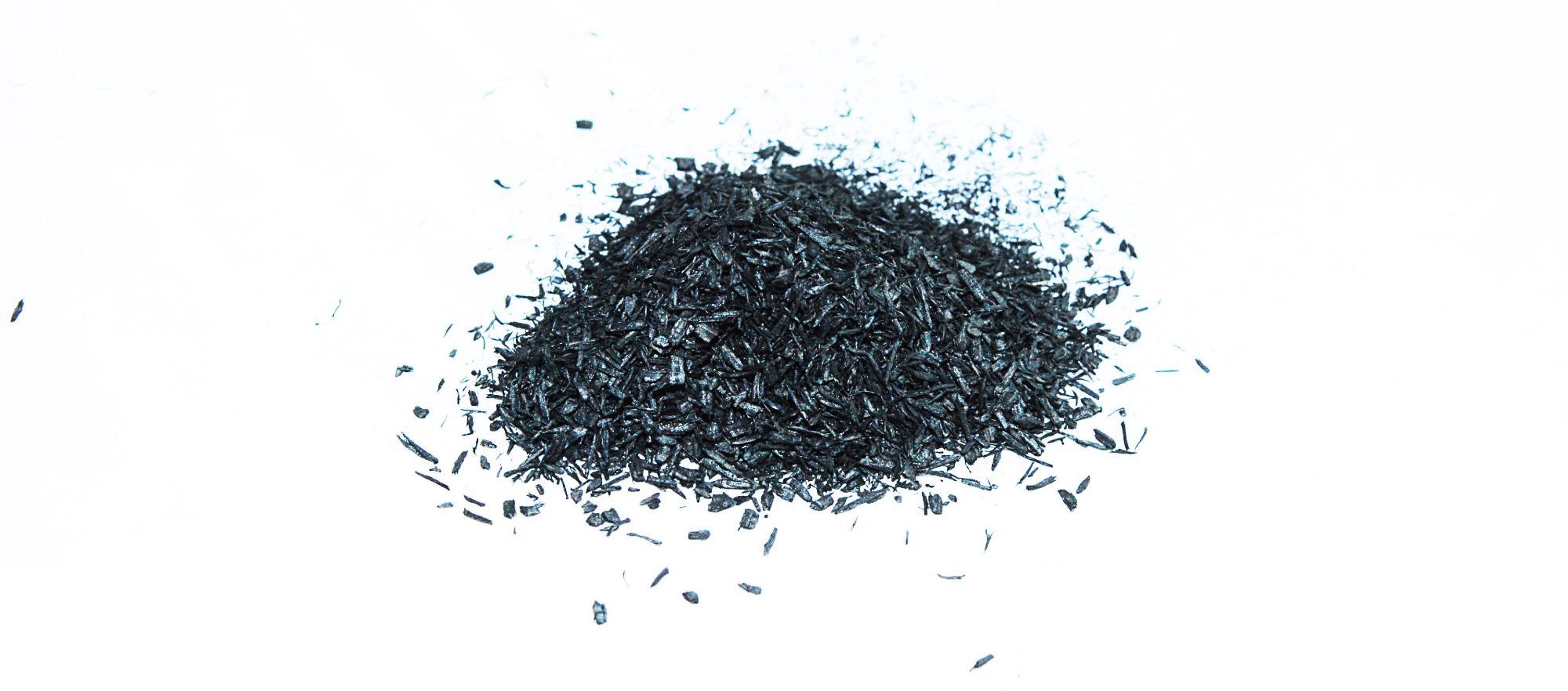Reviewed by Alex SmithApr 25 2022
A research group from Iowa State University that helped develop a demonstration-scale pyrolyzer that has the ability to sequester thousands of tons of carbon dioxide annually has received an esteemed milestone award from XPRIZE Carbon Removal.
 Biochar produced from pyrolysis of corn stover. Researchers at Iowa State University are working to make pyrolysis a key approach to removing carbon dioxide from the atmosphere to combat climate change. Image Credit: Bioeconomy Institute.
Biochar produced from pyrolysis of corn stover. Researchers at Iowa State University are working to make pyrolysis a key approach to removing carbon dioxide from the atmosphere to combat climate change. Image Credit: Bioeconomy Institute.
The milestone prize offers $1 million to the carbon removal group at the Bioeconomy Institute to help progress its perception of using pyrolysis to eliminate carbon dioxide, a major greenhouse gas collected from the air, thus retarding climate change.
Also, the carbon removal team is in the running for an even bigger award from XPRIZE of up to $50 million that will be announced in 2025. XPRIZE declared 15 milestone awards on Friday to concur with Earth Day.
This helps in choosing the winners from a field of 1,133 teams seeking to fight climate change by determining new approaches to removing greenhouse gases from the air.
Robert Brown, Iowa State Anson Marston Distinguished Professor in Engineering, the Gary and Donna Hoover Chair in Mechanical Engineering, and co-director of Iowa State’s Bioeconomy Institute, stated that the milestone prize confirms the research team’s method of carbon sequestration centers on a process called pyrolysis.
At the time of pyrolysis, biomass is heated in the lack of oxygen, providing a carbon-rich material called biochar, which is known as a form of charcoal. Brown and his research team have displayed that biochar is an efficient method of storing carbon in the soil. It is a practice called sequestration, which keeps the carbon out of the air.
How Pyrolysis Sequesters Carbon
As part of photosynthesis, plants withdraw carbon dioxide from the air to produce biomass. But that carbon storage is often temporary. When plants die and decay, they release that stored carbon again into the air.
At the Bioeconomy Institute, the carbon removal team makes use of biomass collected from wood, crop residues and perennial grasses as stocks for pyrolysis while the plant matter seems to still be rich in carbon. The biochar that ensues from the process could be added to agricultural fields, gardens or yards as a soil amendment enhancing soil health and additionally rising carbon storage potential.
Also, pyrolysis produces a thick and viscous liquid called bio-oil, which could be refined into renewable diesel fuel or bio-asphalt. It is an alternative to petroleum-based asphalt.
At present, Iowa State consists of two pyrolyzers, a lab-scale unit installed on campus in the Biorenewables Research Laboratory, and a bigger pilot-scale unit at the BioCentury Research Farm outside Ames.
The carbon removal team has collaborated with Iowa-based Stine Seed Company and Frontline Bioenergy to construct a demonstration-scale pyrolyzer near Redfield, Iowa, northwest of Des Moines.
The new pyrolyzer has been scheduled to come online this summer and will be able to capture and sequester the corresponding more than 1,000 tons of carbon dioxide annually. It was this scale that helped the group qualify for the XPRIZE award.
The researchers from ISU have come up with an approach to make the new pyrolyzer self-heating, enhancing its environmental performance and cost-effectiveness. This so-called “auto-thermal pyrolyzer” functions by pumping a small amount of air into the reactor. This causes a few of the products of pyrolysis to partly oxidize and give off heat.
Pyrolysis does require energy to heat the biomass, but we’re now able to self-heat the process.
Robert Brown, Iowa State Anson Marston Distinguished Professor, Engineering, Bioeconomy Institute, Iowa State University
About the $100M XPRIZE Carbon Removal
XPRIZE, a non-profit hosting competition planned to urge technological progress to help humanity and seeks to reward inventive solutions to global difficulties. XPRIZE has declared a prize purse of $100 million. This is the biggest incentive prize in history, for effective methods of carbon removal. This was financially supported by Elon Musk and the Musk Foundation.
The winning entrant should illustrate solutions that can withdraw carbon dioxide directly from the air or oceans at a scale of at least 1,000 tons annually. Also, entrants should model their charges and illustrate a chance to scale up their method to gigatons of carbon storage in the days to come.
XPRIZE will distribute a $50 million grand prize to the top entrant, along with other $30 million prizes to other groups. It is an acknowledgment that it will probably take a range of carbon removal methods to avoid an approaching climate crisis.
Even if we make heroic efforts to reduce the rates of global greenhouse gas emissions, we’ll still overshoot the targets necessary to avoid large climate impacts. We need to look at solutions that actively remove carbon dioxide from the atmosphere. We think pyrolysis will be one of those solutions.
Robert Brown, Iowa State Anson Marston Distinguished Professor, Engineering, Bioeconomy Institute, Iowa State University
Innovation at Work: Can pyrolysis provide revenue and increased yields for farmers?
Video Credit: Iowa State University.